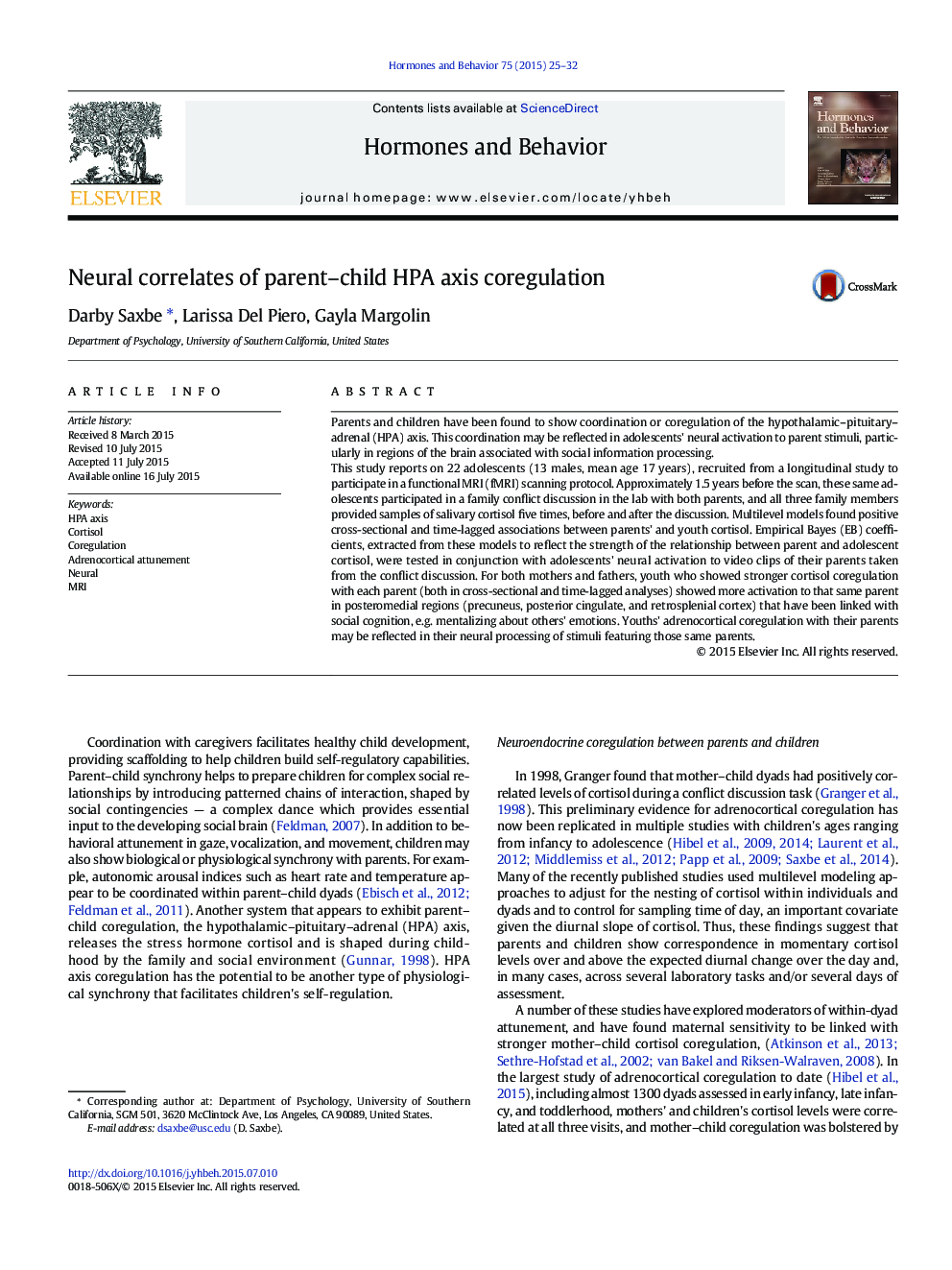| Article ID | Journal | Published Year | Pages | File Type |
|---|---|---|---|---|
| 6794659 | Hormones and Behavior | 2015 | 8 Pages |
Abstract
Adolescents underwent MRI scanning approximately 1.5 years after participating in a laboratory visit during which they and their parents sampled cortisol. Empirical Bayes coefficients reflecting the strength of both time-lagged and cross-sectional cortisol coregulation were estimated for both mother-youth and father-youth dyads, and then tested to see if they moderated youths' neural activation to viewing and rating the emotions of each parent. As shown, youth with stronger coregulation to each parent also had more activation to viewing that parent in posterior cortical midline structures (red = cross-sectional coregulation with mother; green = time-lagged coregulation with mother; blue = cross sectional coregulation with father; yellow = time-lagged coregulation with father). The results suggest that parent-child cortisol coregulation may have a distinct neural signature in regions associated with social cognition and perspective-taking.85
Related Topics
Life Sciences
Biochemistry, Genetics and Molecular Biology
Endocrinology
Authors
Darby Saxbe, Larissa Del Piero, Gayla Margolin,
